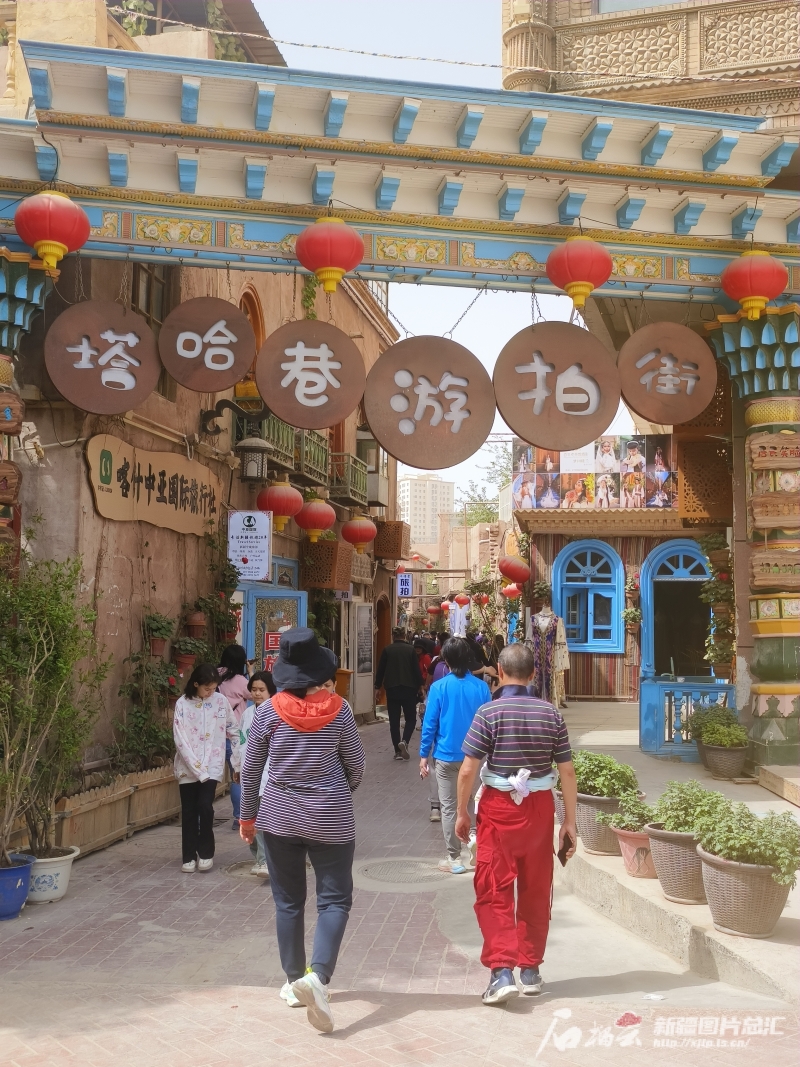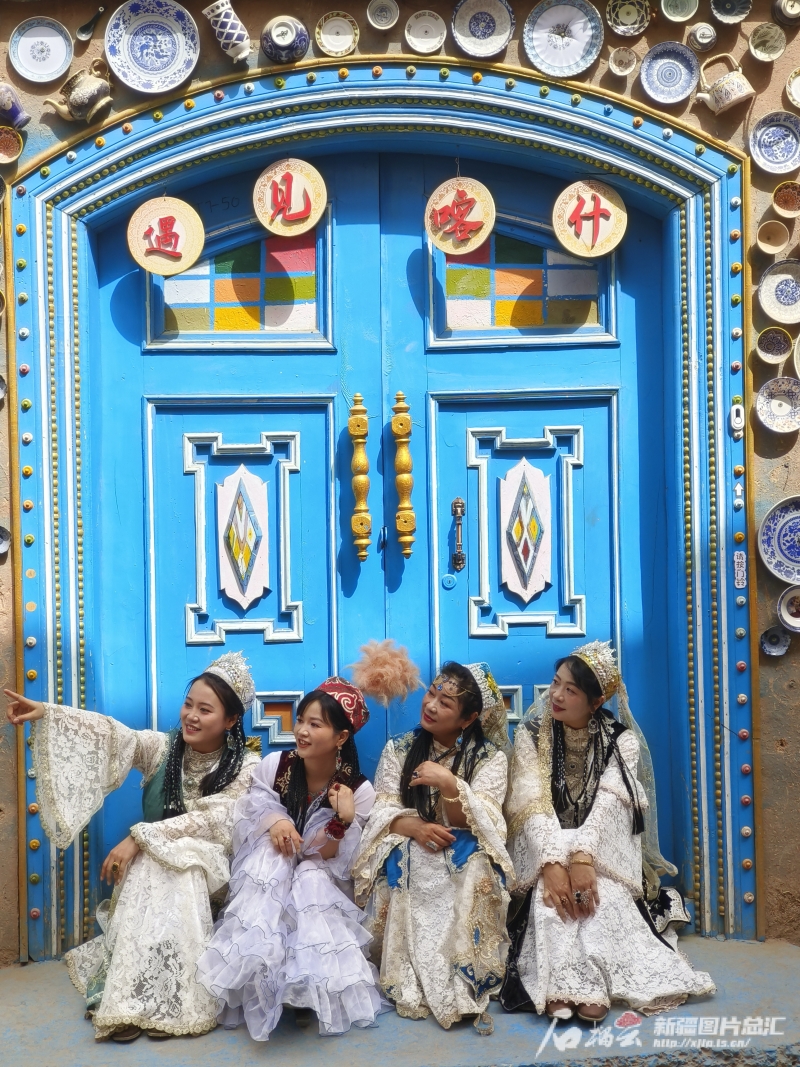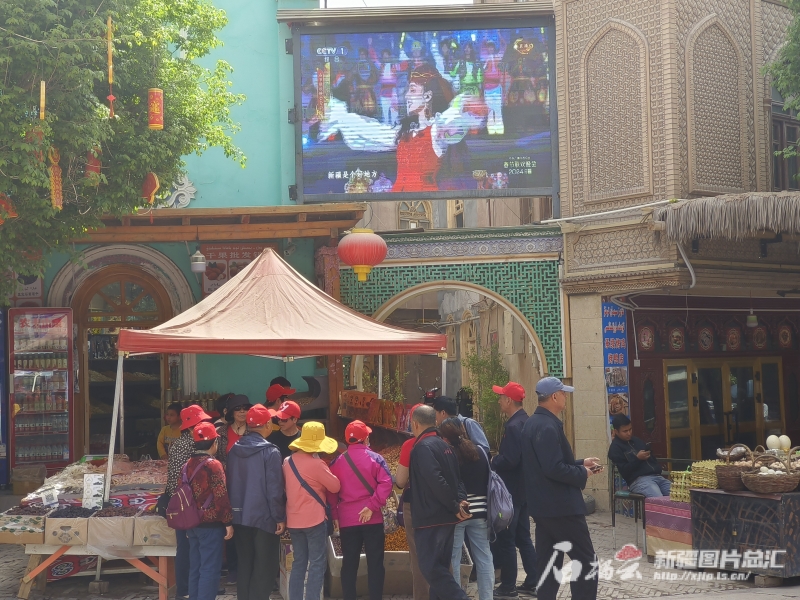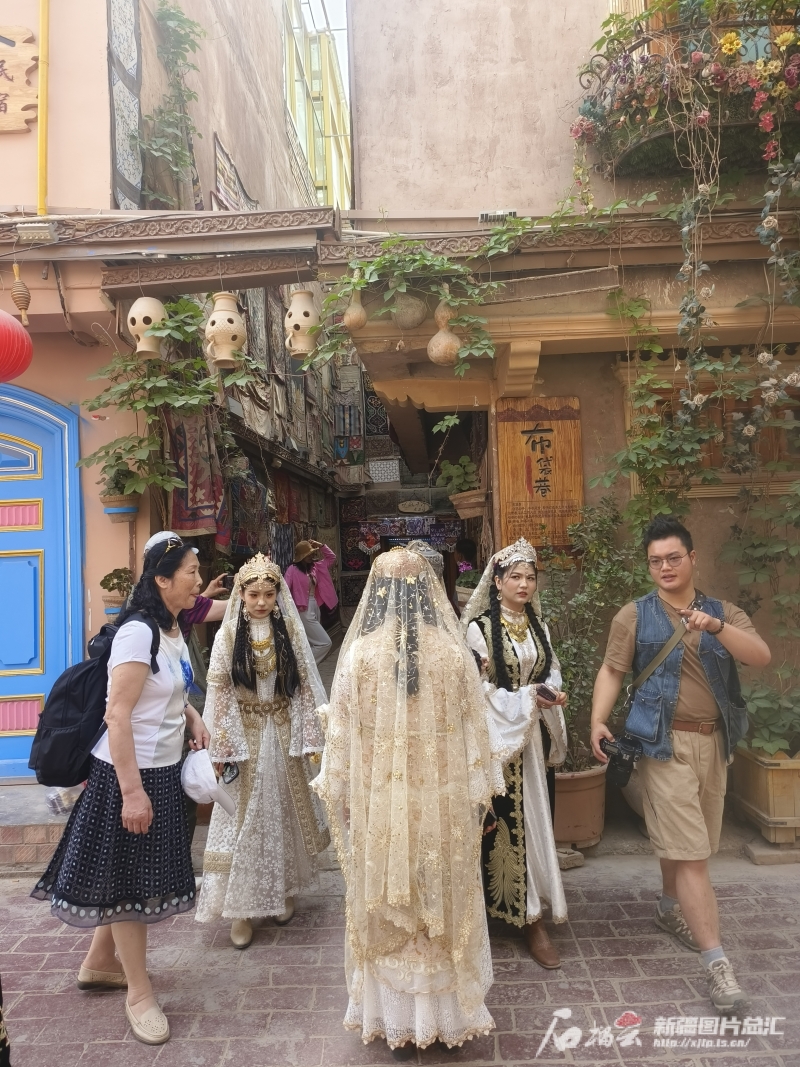Shiliuyun-Xinjiang Daily (Reporter Wang Xinhong) news: Walking into the ancient city of Kashi is like entering a colorful world with a long history and diverse cultures. The impression here can be ancient, modern, peaceful, bustling, colorful, open and inclusive... Everyone who comes to Kashi has their own feelings about it.

Photo shows many tourists visit the ancient city of Kashi in Kashi Prefecture, northwest China's Xinjiang Uygur Autonomous Region. (Photo by Shiliuyun-Xinjiang Daily/ Wang Xinhong)
On April 20, 2024, Amatjan Mamat was singing the song "Xinjiang is the most beautiful place" for tourists at the century-old tea house in the ancient city of Kashi. The beautiful melody won applause from everyone. As soon as the performance ended, the tourists couldn't wait to take a photo with him.
Li Meili, a tourist from Sichuan Province in China, was intoxicated by the singing of Amatjan, and came to take a photo with him. "Your singing made me feel that the cultural heritage of the ancient city of Kashi truly lives up to its reputation."
"I have lived here for most of my life, witnessing its process from being messy and dilapidated to being neat and beautiful," Amatjan said.

Photo shows tourists wear ethnic costumes and take photos at the ancient city of Kashi in Kashi Prefecture, northwest China's Xinjiang Uygur Autonomous Region. (Photo by Shiliuyun-Xinjiang Daily/ Wang Xinhong)
The world-famous ancient city of Kashi is one of the largest surviving collections of earthen buildings in the world. It is located in the southwest of Xinjiang and is one of the important stops on the ancient Silk Road and a crossroad for cultural exchange between the East and the West. In 1986, Kashi City was listed as national historical and cultural city in China.
In 2010, an investment of 7.05 billion yuan (about 970.8 million U.S. dollars) was fully launched for the renovation project of the ancient city of Kashi, which involved a population of about 220,000. According to the principle of "maximizing the preservation of original features," 49,083 traditional dwellings with historical and cultural value have been renovated and reinforced while retaining the original spatial pattern. This former largest shantytown in Kashi City has since become the first national 5A level historical and cultural scenic spot in Xinjiang.

Photo shows performers perform at the century-old tea house in the ancient city of Kashi, Kashi Prefecture, northwest China's Xinjiang Uygur Autonomous Region. (Photo by Shiliuyun-Xinjiang Daily/ Wang Xinhong)
After the renovation of the ancient city of Kashi, Abdmjit Abdrexiti opened a cafe shop on Artux Lane. "The cafe shop is on the first floor, and we live on the second floor. We can watch the scenery outside through the window every day. Our life is very comfortable."
"The renovation of the ancient city of Kashi has effectively protected and inherited much intangible cultural heritage," Adlijan Abdkader, the head of the publicity section of management committee of the ancient city of Kashi said.

Photo shows traditional ethnic costumes, which can be seen everywhere in the ancient city of Kashi, Kashi Prefecture, northwest China's Xinjiang Uygur Autonomous Region. (Photo by Shiliuyun-Xinjiang Daily/ Wang Xinhong)
Walking in the ancient city of Kashi, you can find that much of the intangible cultural heritage have been transformed into cultural and creative products. These cultural and creative products have derived new formats, new scenes, and new models, making the tourism industry develop rapidly in Kashi City.
Inheritance is for development. For thousands of years, the ancient city of Kashi has accumulated rich historical and cultural heritage. In the alleyways of the ancient city, there are countless plaques with the words "ancient" and "old." It indicates that, both artistically and practically, the ancient city of Kashi has been constantly innovating while preserving tradition.

Photo shows ethnic instruments and handicrafts in the ancient city of Kashi, Kashi Prefecture, northwest China's Xinjiang Uygur Autonomous Region. (Photo by Shiliuyun-Xinjiang Daily/ Wang Xinhong)
Kahar Mamatming, the honorary chairman of the Kashi Artists Association who resides in the ancient city of Kashi, said that in recent years, he as well as his colleagues and students have painted the ancient city with both ancient and modern elements. He said, "In this way, the former glory, current prosperity, and future potential of Kashi on the Silk Road can be showcased to people."
“You have never been to Xinjiang if you have not been to Kashi.” In recent years, this sentence has attracted a lot of tourists to Kashi. This year, the China Media Group set up a sub-venue for the 2024 Spring Festival Gala in Kashi for the first time, and it is the opportunity to showcase the profound cultural heritage of Xinjiang to the world. In just eight minutes, the performance presented splendid residences in Kashi, wonderful stages, and passionate singing and dancing, showing the integration of tradition and modernity in Kashi.

Photo shows people watch performance of the Kashi sub-venue for the 2024 Spring Festival Gala at the ancient city of Kashi in Kashi Prefecture, northwest China's Xinjiang Uygur Autonomous Region. (Photo by Shiliuyun-Xinjiang Daily/ Wang Xinhong)
Previously, Kashi was known to people for its profound historical and cultural heritage, but now Kashi has better development due to its splendid culture. Because of the "long tail effect" of the Spring Festival Gala, tourism in Kashi has become popular.
In the first quarter of 2024, Kashi received 7.17 million tourists, a year-on-year increase of 58.82 percent. The tourism revenue has also researched six billion yuan (about 826.87 million U.S. dollars), a year-on-year increase of 90.73 percent.

Photo shows tourists wear ethnic costumes to take photos at the ancient city of Kashi in Kashi Prefecture, northwest China's Xinjiang Uygur Autonomous Region. (Photo by Shiliuyun-Xinjiang Daily/ Wang Xinhong)
The implementation of relevant protection regulations demonstrates the preciousness of the ancient city of Kashi.
Like-minded people will not feel distant due to the barriers of mountains and seas. The integration of tradition and modernity now allows Kashi to showcase a vibrant, harmonious, and inclusive cultural landscape.
(A written permission shall be obtained for reprinting, excerpting, copying and mirroring of the contents published on this website. Unauthorized aforementioned act shall be deemed an infringement, of which the actor shall be held accountable under the law.)









